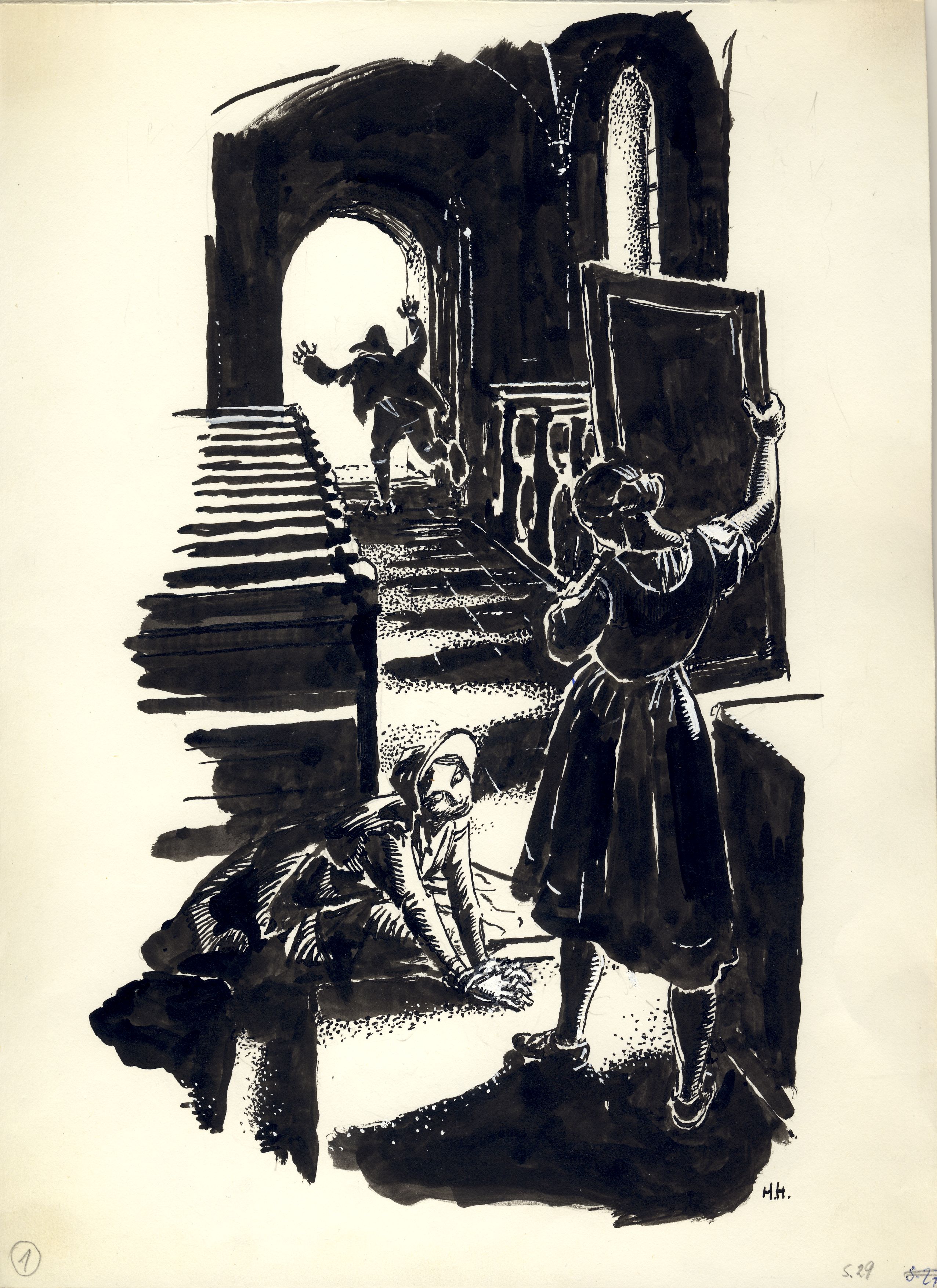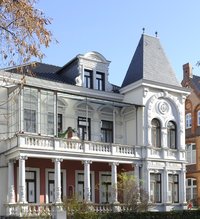Die Tuschezeichnung ist eine Illustration zu der Sage von der Kirche im Hain und Burg Rothestein bei Allendorf:
In einer Kirche steht eine Frau, die ein Bild in der Hand hält, mit der Rückseite zum Betrachter. Sie blickt auf ein junges Mädchen, das in demütiger Haltung vor ihr auf dem Bodn kniet. Ein Mann rennt zum Ausgang der Kirche.
Rechts unten in der Abbildung befindet sich das Signet des Künstlers: H.H. (Hans Happ).
Erst abgedruckt in Karl Paetow: Die schönsten Wesersagen. Hameln1989, 5. Auflage, S. 29.
en









